Synopsis of Bad Hair (2020)
Bad Hair (2020) is a skittish cross between satire, comedy, and horror. The movie opens with an impactful scene of young Anna Bludso (Zaria Kelley) losing her hair after a relaxer application goes wrong. This scars her and makes her afraid of the creamy crack and making her hair. A few minutes into the movie, it transports us to 1989 and we watch as an older Anna (Elle Lorraine) tries to make her way in the competitive, colorist, and sexist world of television. Anna works at Culture, a 1989, African-American version of MTV Base, as an assistant to Edna (Judith Scott), the current head of programming. Unfortunately, Culture’s homey, little snow globe is shaken up when the station owner, Grant Madison (James Van Der Beek) replaces Edna with Zora (Vanessa Williams), a former supermodel.
With Edna gone and “Zora with the good hair” coming in with her assistant, Anna no longer has a purpose at Culture. The situation becomes especially dicier with the way Zora is going through the employees faster than a hot knife through butter. When Anna finally gets an audience with Zora and pitches her idea on how to give Culture much-needed visibility by adding a live music video countdown, Zora is impressed by how innovative Anna is and keeps her on as an assistant. There is however a singular condition: Anna has to do something about her short, kinky, 4c hair.

To realize her dreams, Anna follows Zora’s recommendations borrows money from her Aunt, and ends up at Virgie’s, an exclusive hair salon guaranteed to bring out “the Becky in every Tanisha.” Anna is denied entry as she doesn’t have an appointment. After a moving monologue on dreams and how out of reach they can be, Virgie (Laverne Cox) finally fits Anna into her timetable. The installation process was grueling. Anna gets flashbacks to the hair incident of her childhood while we get icky, POV images of the curved needle ferreting in and out of her bleeding scalp. In the end, Virgie gives Anna a pink bottle of hair cream and warns her never to get the weave wet.
Proving that love is definitely in the “hair”, Anna’s life changes completely in the wake of her new hair. She moves from being a kinky-haired fly on the wall to being a hair-flipping femme fatale. For once since her history at Culture, people actually see Anna as opposed to looking through her. Anna convinces the other VJs to swap their braids and kinks for some luscious weaves. However, this little hairmpire was fated to dissolve- and it all started when the weaves started acting strangely. From having intense hunger pangs and strange dreams down to the hair moving on its own, eating off her plate, and finally attacking her rapist landlord, Mr. Tannen, it is obvious Anna’s weave is a killer… literally.
Interacting with Zora at the party proves that Anna is not the only one having a bad hair day, so to speak. At the party, she sees her former boss, Edna who accuses her of being a sell-out and of becoming the very thing Culture was formed to fight. Things get progressively worse as Anna bit by hairy bit loses herself to this hirsute entity on her hair, discovers Zora has made herself the show’s host despite all her promises, and is the one Julius is sleeping with. The climax of it all is when Anna has sex with Julius. While in the throes of passion, the weave possesses her and she stabs (and kills) Julius. The hair rewards itself for a good day of work by feeding on his blood.
Anna tries to uninstall her hair at a natural hair salon but the hair ends up killing everyone there the instant the stylist tries to cut it off. At this point, the movie is already a mishmash of folklore, hair goals gone rogue, slavery, and racial micro and macro aggressions, all against the backdrop of office dynamics and intrigues. However, it gets messier as the movie tries to juggle more themes.
Anna recalls a slave lore titled “The Moss Haired Girl” about a young slave who makes a wig from tree moss just to have straight her like her masters. The moss turns out to be the hair of dead witches who possess the slave girl and kill her master. The story is from a book on African-American slave lore and was given to her by her uncle (Blair Underwood), a Black studies professor. Anna finally untangles the mystery of her killer weave and discovers that everyone that got weaves from Virgie’s is possessed. In a rush of events, Zora is killed while trying to forcibly get rid of the hair and her body wholly possessed by the hair. Anna unwittingly rids herself of her weave by getting it wet.
Bad Hair (2020) takes a jumbled turn when we discover the plantation master’s descendants continued to cultivate the tree moss despite knowing its metaphysical properties. In a non sequitur turn of events, we discover that Culture Station owner, Madison is the new plantation owner. Like all worthwhile horror movies, the movie ends on an ominous note when Anna’s cousin Linda announces she got an appointment at Virgie’s.
Analysis of Bad Hair (2020)

Bad Hair (2020) reminds me of Bridgerton; it promises a lot and delivers on very little. The film attempts to handle a lot of heavy-duty themes and ends up doing a shoddy job overall. Admittedly, the cast does a marvelous job of connecting with their roles:
- Elle Lorraine (as Anna Bludso) gives the struggle of being a kinky-haired, unambiguous woman of color in the superficial world of television a relatable tangibility- and her delivery of weave-possessed Anna is deliciously hair raising.
- It is nostalgic to watch Vanessa Williams (Zora) play the role of the quintessential bitch-on-wheels, especially after re-watching the series “Ugly Betty” and seeing her play the same role in the character of Wilhelmina Slater.
- Blair Underwood, (as Amos Bludso) with his tantalizing salt-and-pepper look, plays the part of the pan-negritude professor to a T.
- Expectedly, Kelly Rowland (as Sandra) and Usher (as Germane D) naturally dissolve into their musical roles.
However, you cannot disguise a jumbled plot behind impressive acting and a star-studded cast; at some point, the confusion shines through. The movie is a hodge-podge of inelegantly and incompletely handled themes. From the title, you’d expect the movie to really handle Pelo Malo or the good hair-bad hair debate within and without black spaces.
It doesn’t.
In the 102 minutes that the movie lasts, it barely scratches the surface of core themes. The ending is rushed and a bit confusing. Nevertheless, Bad Hair (2020) got some things right.

By film and Hollywood standards, Anna, with her dark skin, corkscrew curls, and bold, unambiguous features, is a D-girl.
The end.
This tag doesn’t give room for any talent or bright ideas she might have. As we see throughout the movie, they continuously pass her up even for opportunities she is more than qualified for. One thing I feel Bad Hair (2020) does a good job of showing is the fact that hair is not just hair, as most people think. It is a huge determinant of sex appeal and the opportunities you (will) get. The movie inundates us with covert and overt images that prove this. From the “hair that grooves” billboard featuring a woman with a beautiful mane of hair and Caucasian women flipping their hair in slow-mo to Anna suddenly becoming the belle of the ball when she gets a hair makeover, Bad Hair (2020) shows the reality that in a world of Eurocentric beauty standards, you might just be a hair away from your big appointment.
Zora changing the show’s name from “Culture” to “Cult” also adds a suspenseful richness to the disorganized plot and foretells later events in the movie. The movie reminds me of stories that hovered in primary school playgrounds when I was a child; of weaves gotten from the water kingdom that possessed and controlled their earthly wearers. Though I am partial to stories and folklore, I find Anna’s family’s interest in folklore a bit too convenient. All in all, Bad Hair (2020) made for a meh viewing experience.
Themes
As much as I’d like to borrow a leaf from the movie and try to analyze all the themes it attempted to handle, I don’t think that is necessary. While the movie orbits a lot of themes like slavery and Native and African-American lore, witchcraft, and sexism, I would like to focus on the three major themes that are linked to the movie’s title.
Texturism
The theme of texturism is the most dominant in Bad Hair (2020). Texturism is the glorification of black hair with finer, looser curl patterns. People with these hair types have “good hair” and as we can see from the movie, are treated better and afforded more opportunities than those with kinkier, Type 4 hair. This is like the Pelo malo phenomenon in Afro-Hispanic spaces, where kinkier and coarser hair types are called Pelo malo which literally means bad hair. Usually, women with these hair textures manually or chemically alter their hair into silken obedience. Sometimes, they use hair extensions and wigs. Kinkier hair types only receive love and air time when they are outrageously long.
Anna has “bad hair” and the fact that she chooses not to alter it impedes her climb up the professional ladder. After her experience with the relaxer, it is safe to say Anna had to learn to be comfortable with her kinks. Unfortunately, comfort is not considered in the superficial world of television.
Colorism
An -ism many of us are familiar with.
For the sake of clarity, colorism (also known as shadeism) is prejudice or discrimination where members of the same race are treated differently (by people within and outside their race) based on the social implications attached to skin color. In Bad Hair (2020), we see this theme in the fact that the women in critical positions (Edna and Zora) are light-skinned black women, while their darker-skinned counterparts are usually assistants. We also see it at the beginning of the movie when Anna’s light-skinned cousin tells her (Anna) people will finally believe they are related after the perm.
The “Done” vs “Un-done” Hair Dichotomy
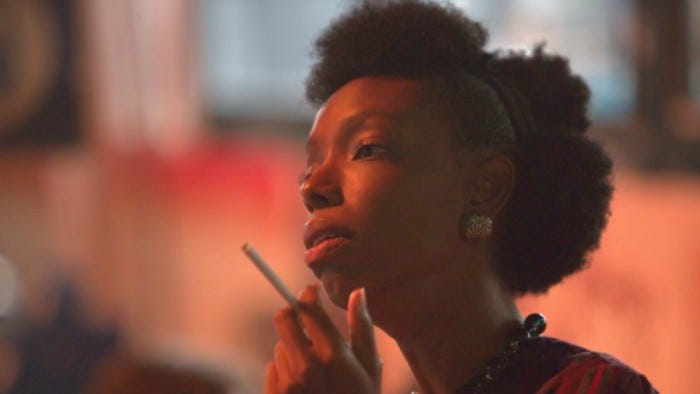
The most ominous moment in “Bad Hair” maybe when Zora asks Anna, “who does your hair?”
Four simple words implying her hair doesn’t look the way it should.
Having neat hair is a culture the older generation of black women tried to instill in us with their hot combs, too tight cornrows, and creamy relaxers. This culture had no room for helmet hair, bed hair, textured edges, or a fashionably disheveled, just-got-out-of-bed look. Your hair always had to “be and look done.” Hair that wasn’t perfectly coiffed, braided, or slicked out of the way is viewed as “raggedy, untidy, and unbecoming.” This is as much a product of slavery and racial oppression and culture. As Asha (Naturally High), a natural hair Youtuber and content creator, noted to the ancient Africans, beauty was something you did or added to yourself. Based on that, Anna’s short, kinky hair needed to be done and neatened up.
Verdict
Plot: 5.0
Plot Progression: 4.5
Character Development: 7.0
Visuals: 5.0
Total: 5.3
On a scale of 1 to 10, Bad Hair (2020) is a 5. If you are a folklore, horror, or hair aficionado, then you will enjoy select aspects of this movie.
Originally published on Medium.
Like what you read? For more on colorism and hair issues, check out Is My Black Really Beautiful? and Ihairesponsibility
For movie reviews, check out The Root of All Evil: Review of Gold Statue (2019) and Discovering the Sole Purpose of Life: Review of Soul (2020)
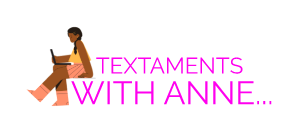
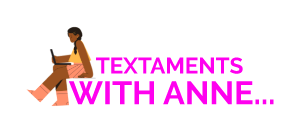


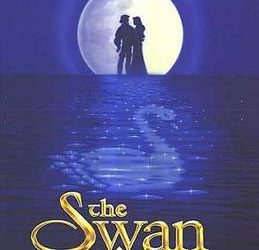

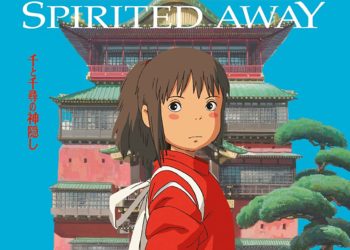

Comments 1